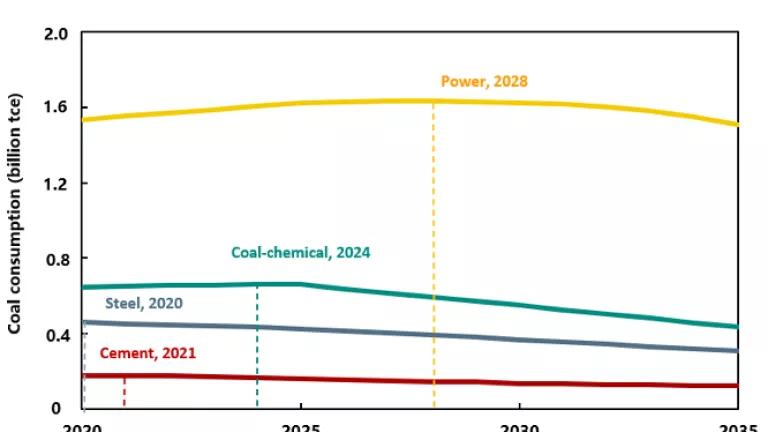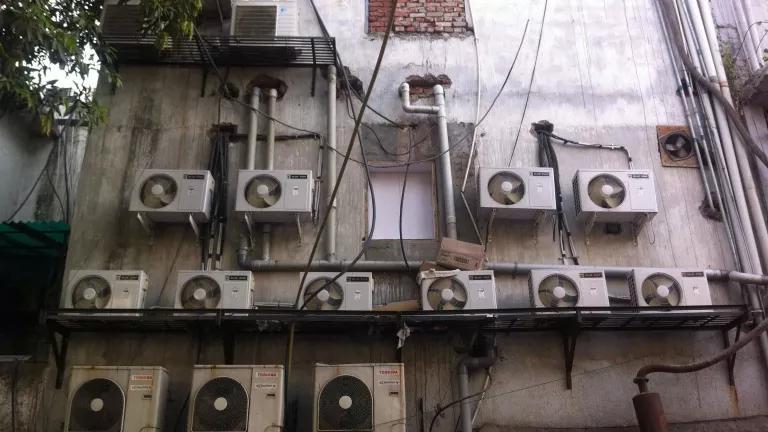Lots has been published about the labor issues that Apple has faced over the past two years, but much less about the environmental problems in the company’s supply chain. That is certainly NOT because the IT industry has a paltry impact on the environment; to the contrary, IT manufacturing relies on a number of toxic metals and solvents and has a huge environmental impact that is quite apparent across China. NRDC and a Chinese NGO named the Institute of Public and Environmental Affairs (IPE) have actively worked with Apple over the past year to recommend an improved environmental oversight program. [http://switchboard.nrdc.org/blogs/lgreer/nrdc_work_on_apple_computers_s.html].
IPE released its latest report in Beijing this week, on environmental pollution from the IT industry, focusing heavily on Apple’s transition to a much stronger player in supplier environmental oversight. (Here is IPE's press release, and here is the report.)
In addition to an updated report card on the environmental performance of various IT brands, the report describes in detail the pollution problems at three Apple suppliers and the corrective actions that have been required. This information comes from path-breaking verification audits that IPE and its NGO coalition at the Green Choice Alliance have undertaken at these sites at Apple’s invitation. The IPE report gives a much better flavor of what is going on in the supply chain of this industry than we can glean from the recent Apple Supplier Responsibility Report [PDF] or other sources.
It’s fair to say that until recently, Apple Computer’s environmental policies looked quite typical of most multinational corporations and thus fell dramatically short of the effort necessary to oversee and reduce environmental impacts from its manufacturing abroad. Now, thanks to aggressive work in some areas, Apple has some important components of a model supply chain in place. The company has opened itself up to work with NRDC and to IPE over the past 18 months and made substantial progress.
Specifically, here’s what Apple has undertaken lately:
- Gone well beyond the factories where products are assembled (Tier One suppliers) to audit for environmental problems upstream in the supply chain (material suppliers in Tiers 2 and 3), where problems are more severe.
- Expeditiously required that facilities address problems discovered during these audits, with corrective action punch lists and timelines to ensure work is undertaken.
- Begun an active program of checking all its suppliers against the IPE database of environmental violators, looking for trouble, so to speak, to make sure problems are identified and addressed.
- Tracked to closure most of the violations, critical of Apple, brought to its attention by IPE’s report about 18 months ago. (http://www.scribd.com/doc/63681015/IPE-report-The-Other-Side-of-Apple-II)
- Most notably, allowed for third-party verification audits overseen by IPE and the Green Choice Alliance to ensure results of its cleanup orders, allowing in-person, on-site inspections accompanied by an environmental auditing expert and publication of a detailed audit report on the internet for public comment in order to promote accountability of its audit program and transparency of results.
To the best of my knowledge, most multinationals across all industrial sectors are not looking past their Tier One assembly factories, they are seldom doing in-depth environmental audits anywhere in their supply chain (focusing largely on labor matters), and they are certainly not inviting environmental NGOs or neighbors to undertake third party verification audits or public review of the results. For these companies, yes!: Apple’s current environmental supply chain program provides an excellent starting point to upgrade your current programs.
Those companies already on top of this much: let me know! Really curious to hear from you.
However, much important work remains to be accomplished in Apple’s environmental supply chain policies before the company attains the high standards that it sets for itself in all that it does. Here’s what is still missing (though some pieces are under development) – our “to do” list for the company for 2013:
- Accelerate its rate of environmental auditing up the supply chain to bring the program to scale, increasing the pace at which the company identifies and addresses problems throughout its supply chain and focusing their attention where it matters the most. The company should create and publicly announce goals for its audit program and indicate the percentage of the supply chain its aims to cover in 2013, 2014, and beyond.
- Expand, revise, and publicize its list of Environmental Core Violations and Key Environmental Performance Indicators. These demarcate environmental expectations and also provide bright lines that cannot be crossed in environmental performance. They are critical to hold facilities to a clear and accountable standard of review and to inform the interested public what the company considers to be egregious environmental problems. (Generally we support policies that require cleanup rather than termination of a supplier, to leverage the environmental improvements we are seeking.)
- Develop its own environmental standards in key areas of environmental protection to fill in crucial gaps in Chinese environmental requirements as necessary to protect human health and the environment. These should include specific monitoring requirements and obligations to publicly report on discharges.
- Go beyond audits to train suppliers on environmental performance matters to supplement the scanty technical knowledge and help with compliance problems.
- Establish a program that investigates and controls chemical waste disposal from its suppliers to ensure that hazardous waste problems are not being trucked to unacceptable off-site locations.
- More transparently report results of the environmental auditing program in the Annual Supplier Responsibility Report so that the interested public can better understand the types of facilities with problems, types of violations, Apple response, and status/action taken for each violation. (Site names need not be included.)
- Report more than annually on the progress in its environmental audit program, by facility, through frequent updating on the company’s web site.
- Promote cleaner production technologies that can reduce excessive emissions by reducing chemical use in manufacturing, since so much of Chinese manufacturing falls below global standards in this regard.
Finally, companies should not, even inadvertently, be the reason that their suppliers commit environmental violations, such as where large and immediate production demands placed on a suppler would overwhelm its capacity to treat its wastes. To prevent such selection, Apple needs an Environmental Screening Tool for new potential suppliers and renewal of existing contracts that screens for egregious environmental problems or treatment capacity pinch points that would undermine a facility’s ability to comply with environmental law.
Our work with Apple over 2012 has been a kick; the company is serious and detail-oriented and definitely wants to get it right. And the work has clearly had an impact, particularly at those sites with compliance problems brought to the company’s attention by IPE. The third party audits and public disclosure of audit findings, as well as the company’s decision to list its top 200 suppliers for all to see (http://www.apple.com/supplierresponsibility/our-suppliers.html), are completely awesome. The scale-up, to-date, of focused environmental audits has been impressive. Now it is time for the company to put the rest of the policies and procedures in place that will ensure its suppliers perform at acceptable levels on environmental matters and will deliver business consequences to those that don’t. I hope that over the course of 2013, and certainly by this time next year, I can report that a full program is in place.



